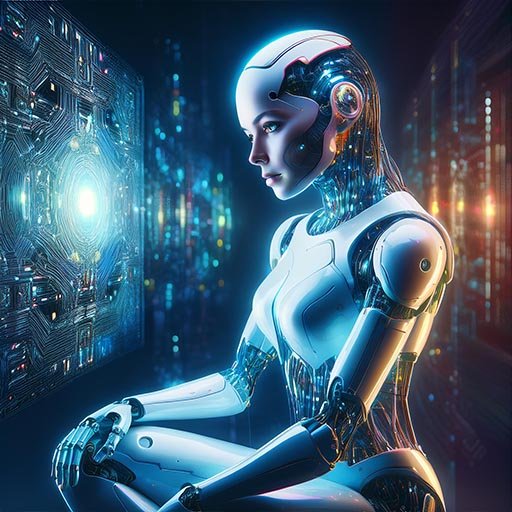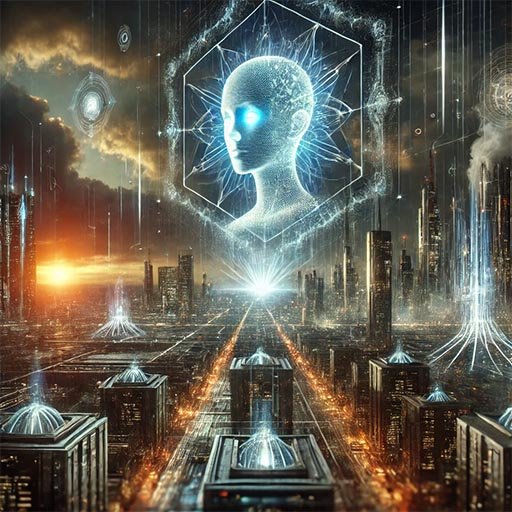
As technology evolves, Artificial General Intelligence (AGI) has emerged as a frontier with the potential to rival human intelligence in ways previously imagined only in science fiction. While traditional AI specializes in specific tasks, AGI represents a level of intelligence designed to match human flexibility, reasoning, and adaptability. This raises a fascinating question: who would be “smarter” in a head-to-head comparison AGI or humans?
In this blog, we’ll dive into the fundamental differences between AGI and human intelligence, examining what each excels at, potential limitations, and whether machines could ultimately surpass humans in intelligence and problem-solving capabilities.
Understanding AGI: What Sets It Apart?
Artificial General Intelligence, or AGI, is a concept representing a type of AI that goes beyond specialized tasks. While current AI models can play games, assist in customer service, or analyze data, AGI aims to possess human-like abilities to learn, reason, and solve diverse problems autonomously across a wide range of activities.
AGI, in theory, could adapt its “thinking” to new scenarios, making decisions based on context rather than pre-programmed instructions. However, there are still many unknowns about how AGI could replicate or exceed human intelligence. Let’s break down the specific ways in which AGI and human intelligence might compare.
AGI vs. Human Intelligence: Key Comparisons
1. Learning and Adaptability
- Human Intelligence: Humans possess a natural curiosity, emotional intelligence, and the ability to learn from diverse experiences and social interactions. Human adaptability is deeply rooted in emotions, creativity, and a lifelong learning process shaped by culture, relationships, and personal goals.
- AGI: AGI would theoretically learn quickly, processing vast amounts of data and adapting based on prior knowledge. It could excel in problem-solving, pattern recognition, and optimization, potentially making decisions faster than humans. However, AGI’s adaptability would depend on algorithms and programming it wouldn’t possess the emotional, cultural, or subjective nuances that influence human decisions.
2. Creativity and Problem-Solving
- Human Intelligence: Creativity is a hallmark of human intelligence, often driven by emotions, intuition, and abstract thinking. Humans can approach problems with unique perspectives and “outside-the-box” solutions, blending knowledge, experience, and imagination.
- AGI: AGI could simulate creativity by analyzing massive datasets, generating novel ideas, or mimicking artistic styles. However, true human creativity involves emotions, personal experiences, and intuition, which may be challenging for AGI to replicate fully. AGI could, however, excel in logical problem-solving and structured creativity, such as developing new scientific models or designing optimized systems.
3. Decision-Making and Emotional Intelligence
- Human Intelligence: Emotions heavily influence human decision-making, adding complexity to how we perceive situations and interact with others. Empathy, morality, and social values guide human choices, creating bonds of trust and cooperation.
- AGI: While AGI can make highly logical and efficient decisions, it may lack genuine empathy or the capacity for moral reasoning. Although AGI could simulate empathetic responses, it wouldn’t experience emotions or personal values the way humans do. This absence could make AGI highly effective in objective tasks but may limit its ability to navigate complex social or ethical situations.
4. Processing Power and Memory
- Human Intelligence: The human brain is remarkable, capable of pattern recognition, abstract thought, and associative memory. However, human memory is selective and sometimes unreliable, which can limit processing efficiency.
- AGI: AGI could process data faster than any human, with near-perfect recall and the ability to store massive amounts of information. Its processing power could lead to quick, data-driven decisions, making it superior in repetitive or computationally demanding tasks. However, AGI’s memory is artificial and relies on data storage systems that, while vast, lack the complex web of experiences that shape human memories.
5. Physical and Sensory Limitations
- Human Intelligence: Human intelligence is limited by physical constraints and senses, which can impact perception and reaction speed.
- AGI: Since AGI could exist in various physical forms, from digital interfaces to robotic systems, it could bypass human physical limitations, potentially perceiving its environment with enhanced sensory systems. This could make AGI better suited for dangerous tasks or those requiring precise control.
Could AGI Surpass Human Intelligence?
Theoretically, AGI could surpass humans in several domains: efficiency, memory, speed, and optimization. A superintelligent AGI could process far more information than a human, make faster calculations, and identify patterns within data that would take humans years to uncover. But while AGI might outperform humans in certain tasks, there are several challenges in its path toward surpassing human intelligence:
- Value Alignment: Ensuring AGI can understand and align with human ethics, values, and social dynamics is a complex challenge. Human intelligence is deeply influenced by subjective experiences and emotions that are difficult for AGI to replicate.
- Emotional and Cultural Contexts: Humans are shaped by cultural, emotional, and social influences that inform decisions, empathy, and creativity. While AGI might excel in objective or logical tasks, it may fall short in tasks requiring a nuanced understanding of human contexts.
- Unpredictability: Human intelligence thrives in ambiguity, capable of adapting to unforeseen events and learning from mistakes. AGI might not be able to respond to unpredictability in the same way humans do without specific programming.
The Potential for Collaboration Between AGI and Humans
Rather than a direct rivalry, many experts envision a future where AGI and humans work together to complement each other’s strengths. Here’s how they might collaborate:
- Enhanced Problem-Solving: AGI could analyze complex data, automate repetitive tasks, and optimize systems, while humans apply creative and ethical decision-making to guide AGI’s actions.
- Scientific Advancements: AGI could accelerate scientific research by analyzing data at unprecedented speeds, with humans overseeing ethical boundaries and interpreting findings in a societal context.
- Global Challenges: Issues like climate change, healthcare, and poverty could be tackled by AGI-powered solutions while humans ensure these approaches align with societal values and long-term goals.
Final Verdict: Who’s Smarter?
In some areas, AGI could prove smarter than humans, especially when it comes to data processing, problem-solving, and computational tasks. But intelligence isn’t just about speed and accuracy it’s also about intuition, empathy, creativity, and ethical reasoning. These qualities are uniquely human and could be difficult for AGI to replicate fully.
So, while AGI might outsmart humans in specific domains, true intelligence encompasses more than raw processing power. The future of AGI isn’t necessarily one where it “outsmarts” humans but one where it complements human intelligence to create a better world.
Conclusion
AGI has the potential to revolutionize society, introducing new efficiencies, insights, and solutions to complex global issues. However, it’s essential to recognize the unique and irreplaceable elements of human intelligence creativity, empathy, and ethical reasoning that AGI might struggle to replicate. Ultimately, AGI’s role is not to surpass humans but to work alongside us, amplifying our capabilities and helping humanity reach new heights. The future isn’t about AGI ruling over human intelligence, but rather about humans guiding and integrating AGI to create a balanced, prosperous world.



